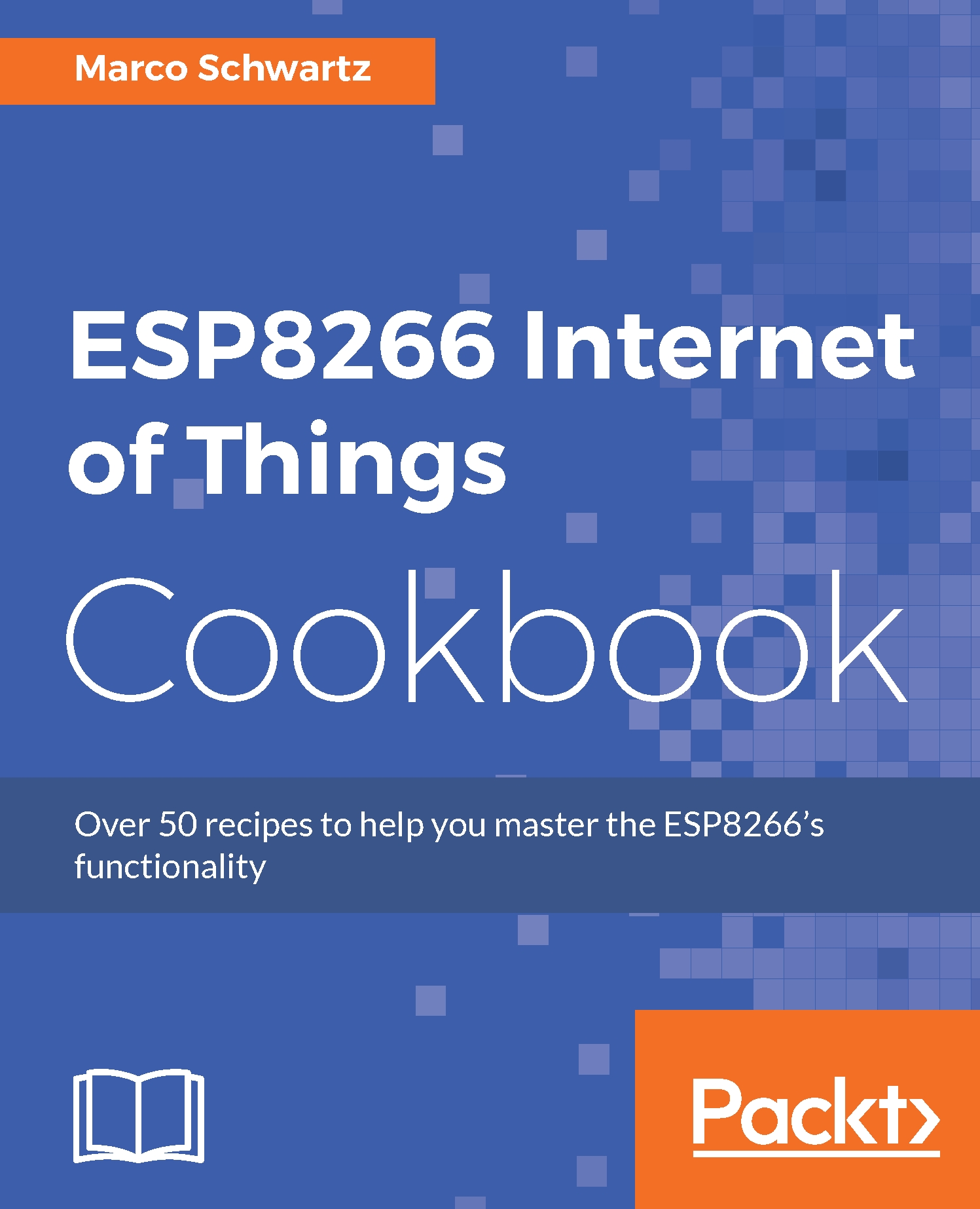Discovering the over the air update of the ESP8266 (OTA)
In this recipe, we are going to learn about the OTA update functionality of the ESP8266. This will enable you to understand how OTA works and how you can apply it in your projects. With this knowledge, you will be able to easily program your ESP8266 boards that are situated in remote locations.
Over the air
An OTA update involves loading firmware to an ESP8266 module via Wi-Fi, instead of using a serial port. This is a very important feature that ensures the delivery of firmware updates to ESP8266 boards in remote areas. You can do OTA using an Arduino IDE, a HTTP server, or a web browser.
The Arduino IDE is usually used for the software development phase. The other two are more important after deployment. They allow you to provide modules with application updates either automatically with a HTTP server or manually using a web browser.
Initial firmware is uploaded onto the ESP8266 board via a serial port. Once the OTA routines are implemented...




































































